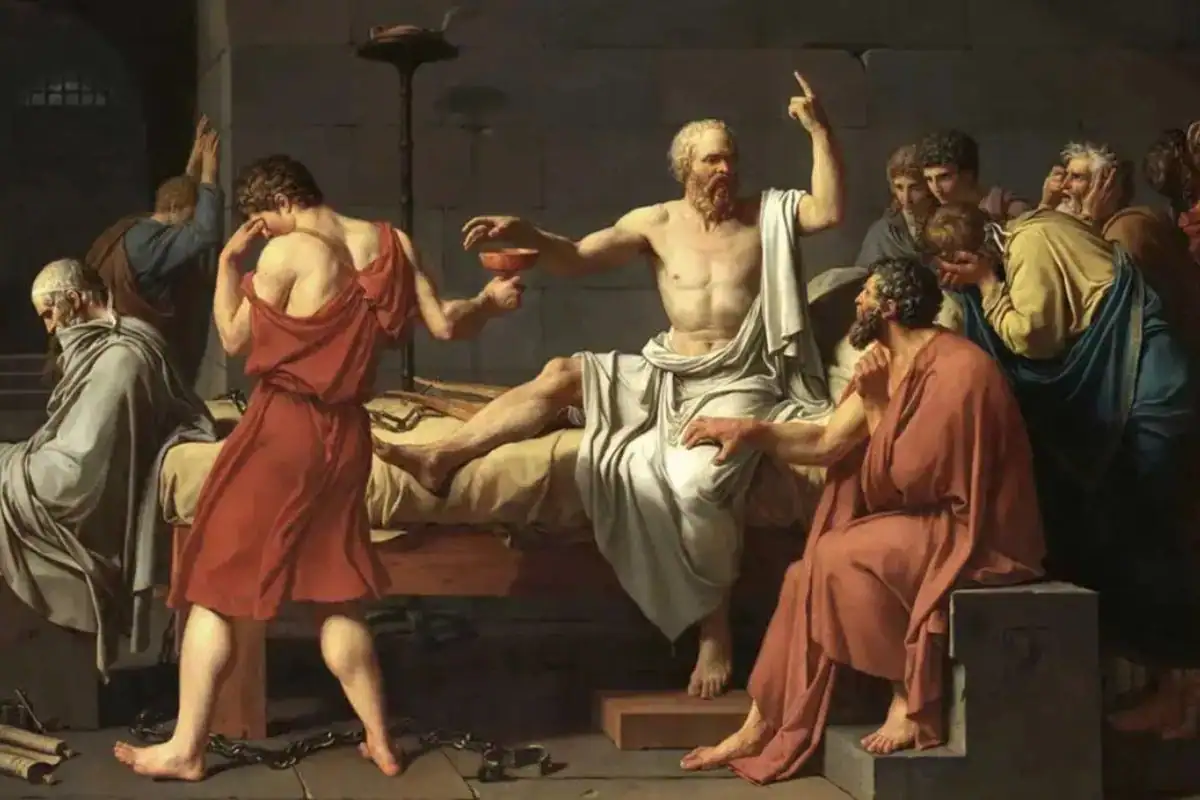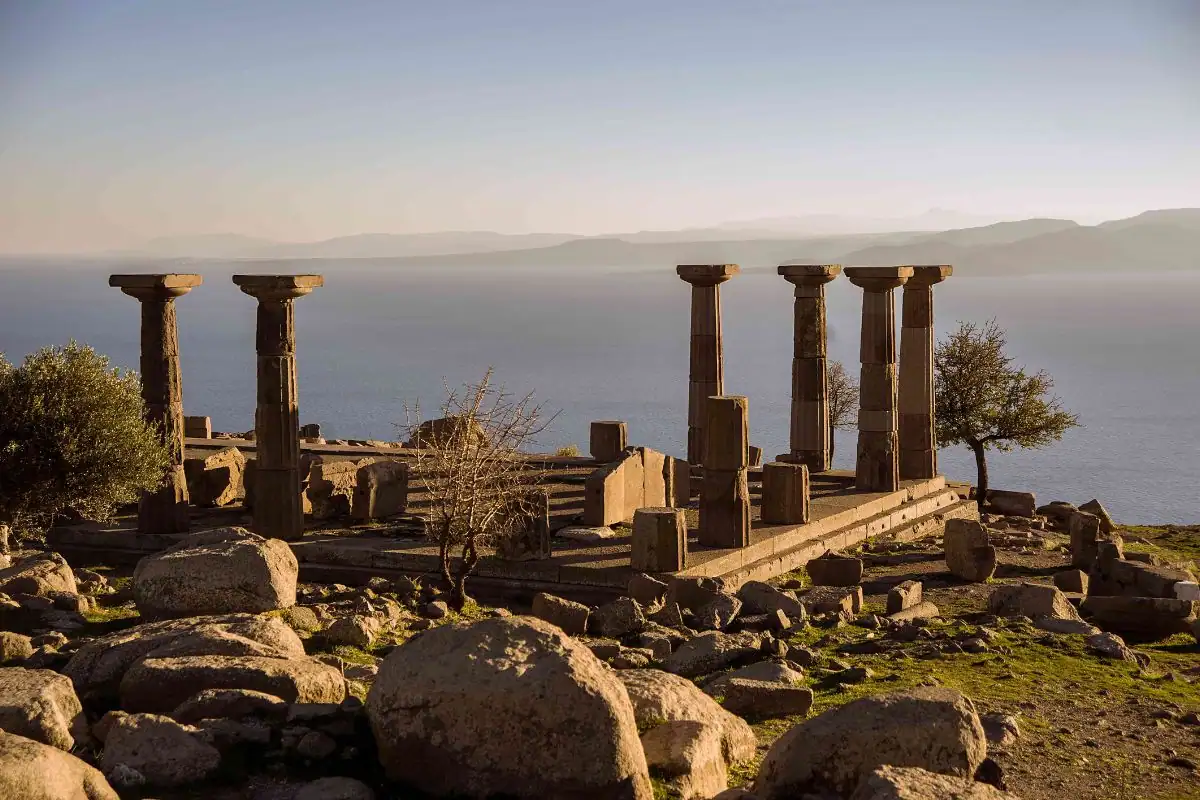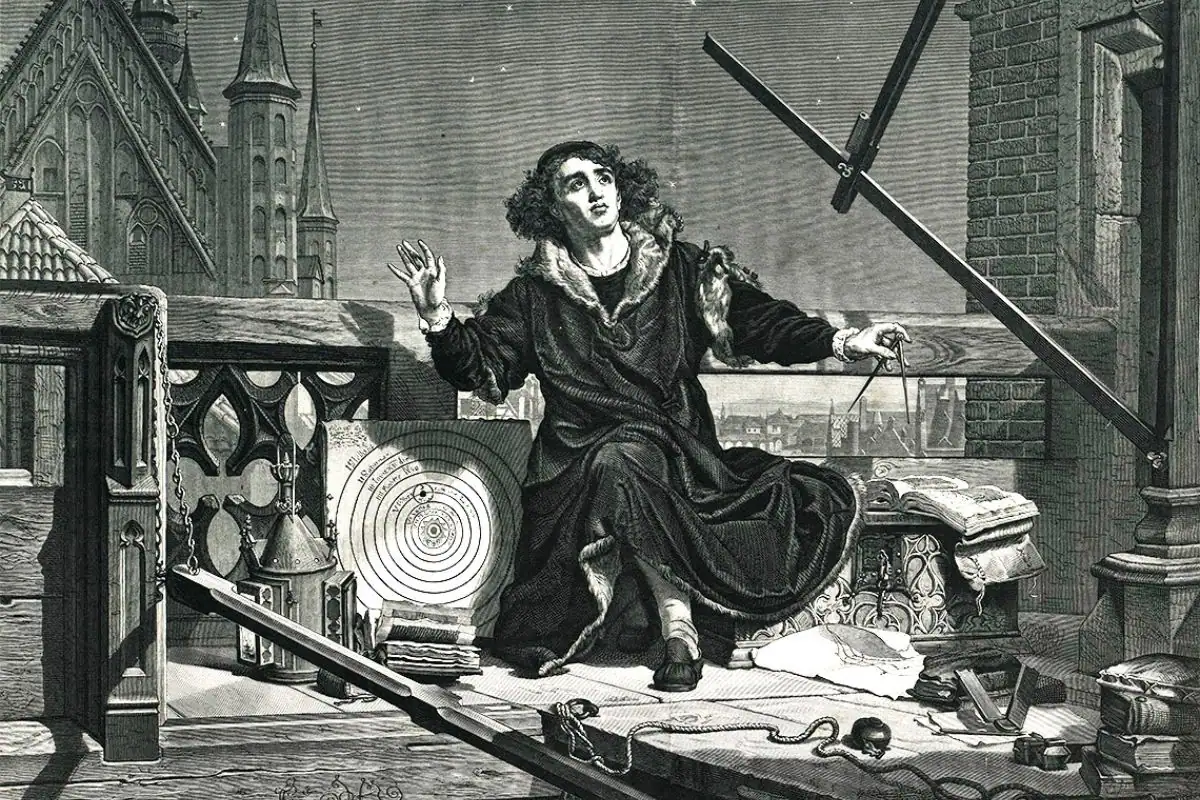Advertisement
Who Was Aristotle
Advertisement
Often hailed as the "Father of Western Philosophy," Aristotle was born in 384 BCE in Stagira, a small town on the Chalcidice peninsula in northern Greece. While details about his early life are sparse, we know his mother, Phaestis, and his father, Nicomachus, who served as a court physician to King Amyntas III of Macedonia, had two other children: a sister named Arimneste and a brother named Arimnestus. After becoming an orphan at a young age, Aristotle was taken under the wing of Proxenus of Atarneus, his sister's husband. He received some education before being sent to Athens at the age of seventeen to study at Plato's Academy.
Disagreement with Plato
For two decades, Aristotle studied under Plato and the two became close friends. However, they eventually had a philosophical falling out. Plato believed that reasoning and thought alone were sufficient to prove a concept. In contrast, Aristotle emphasized empirical evidence, relying on experience and sensory observation. This fundamental disagreement meant that when Plato passed away, Aristotle was not offered the directorship of the Academy, leading him to forge his own path.

Advertisement
Pythias of Assos
During his travels, Aristotle connected with Hermias, the king of Atarneus, who had also studied at Plato's Academy. Accepting Hermias's invitation, Aristotle moved to the Assos region under his patronage. There, he met and married Pythias, Hermias's niece, who was a biologist and embryologist. The couple had a daughter, later known as Pythias the Younger. Hermias remained loyal to Philip II of Macedon and resisted Persian rule. While attempting to negotiate an alliance with Persia, Hermias was captured and executed in 341 BCE. In her honor, Aristotle composed the "Ode to Virtue," according to historical accounts

Advertisement
New Beginnings: The Lyceum
Returning to Macedonia in 338 BCE, Aristotle became the official tutor to King Philip II's 13-year-old son, Alexander III—who would later be known as Alexander the Great. This tutoring role lasted about two years. By 335 BCE, after Alexander had conquered Athens, Aristotle went back to the city with his former pupil's blessing. He established his own philosophical school, the Lyceum, situated in a former wrestling facility. While he had private students, Aristotle also opened the school to the public free of charge. His students were dubbed "Peripatetics," stemming from Aristotle's habit of walking around the grove while lecturing. The school collected written arguments from students, creating one of history's first significant libraries.

Advertisement
Impiety Charges and Exile
Throughout his life, Aristotle was deeply involved in teaching and lecturing. He later began a relationship with Herpyllis, a woman from his hometown of Stagira, who is said to have been a slave. They had several children together, including a son named Nicomachus, after Aristotle's father. Meanwhile, Alexander the Great grew increasingly ambitious. Aristotle's nephew, Callisthenes, who served as Alexander's historian, was falsely executed. Following Alexander's death in 323 BCE, the pro-Macedonian government in Athens was overthrown. Facing formal charges of impiety—a capital offense—Aristotle chose to flee, saying he wouldn't let the Athenians "sin twice against philosophy," a nod to Socrates' execution. He spent his final days in exile on the island of Euboea, passing away in 322 BCE. His will, which has been preserved, made provisions for his family and slaves.

Advertisement
Survival of His Works
Due to his status as persona non grata, Aristotle's works were hidden after his death by his protégé and successor, Theophrastus. Following Theophrastus's death, these works vanished from public view until the first century BCE. During the fall of Rome, thinkers like Avicenna, a Persian polymath, and Maimonides, a Sephardic Jewish philosopher, studied Aristotle's writings. In the thirteenth century, theologian Thomas Aquinas merged Aristotelian philosophy with Christian doctrine, laying the groundwork for medieval Catholic thought.

Advertisement
Classification of His Works
Aristotle is believed to have written over 200 treatises, though only about 31 have survived. Andronicus edited these in Rome upon their rediscovery in the first century. Despite the gaps, the logical foundation of his writings remains robust and continues to exert significant influence. His works are generally categorized into four groups: Organon, Theoretical, Practical, and Rhetoric/Poetics. The "Organon" encompasses logic used for philosophical or scientific understanding. Theoretical works delve into animals, metaphysics, cosmology, and physics. Practical works discuss excellence at individual, societal, and familial levels. Lastly, "Rhetoric" and "Poetics" explore how language can move and inspire people.

Advertisement
Classification of Sciences
Aristotle divided sciences into three categories: Productive, Practical, and Theoretical. Productive sciences cover fields like engineering and architecture, as well as strategy and rhetoric used for success in courtrooms and on battlefields. Practical sciences, including ethics and politics, focus on governing behavior. Theoretical sciences, such as theology, physics, and mathematics, aim for knowledge sought purely for its own sake, without practical application.

Advertisement
Classified More Than 500 Animals
Aristotle was a pioneer in biology, insisting that animals should be classified by genus and species. In his treatises, he meticulously organized over 500 animal species. It's believed that Alexander the Great sent him various specimens from his campaigns, enriching his research. Fascinatingly, some of his detailed observations about animal features were only confirmed nearly 1,800 years later with the invention of the microscope.

Advertisement
The Inspiration for Chaos Theory
Chaos Theory, a branch of mathematics dealing with systems that appear random but have underlying patterns, owes a nod to Aristotle. This theory applies to complex systems like weather and climate. Aristotle observed that a slight deviation from the truth can be magnified over time. Scientists speculate that this might have been an early glimpse of what we now call the "butterfly effect."
Advertisement
Other Famous Students of Aristotle
In addition to Alexander the Great, Aristotle taught other notable figures. One such student was Cassander, who ruled Macedonia from 305 BCE to 297 BCE. A contemporary of Alexander, Cassander studied alongside him at the Lyceum. After Alexander's death, his son Alexander IV was the rightful heir. However, Cassander seized the throne, married Philip II's daughter Thessalonica, and tragically ordered the murder of Alexander IV to secure his position.

.png)




